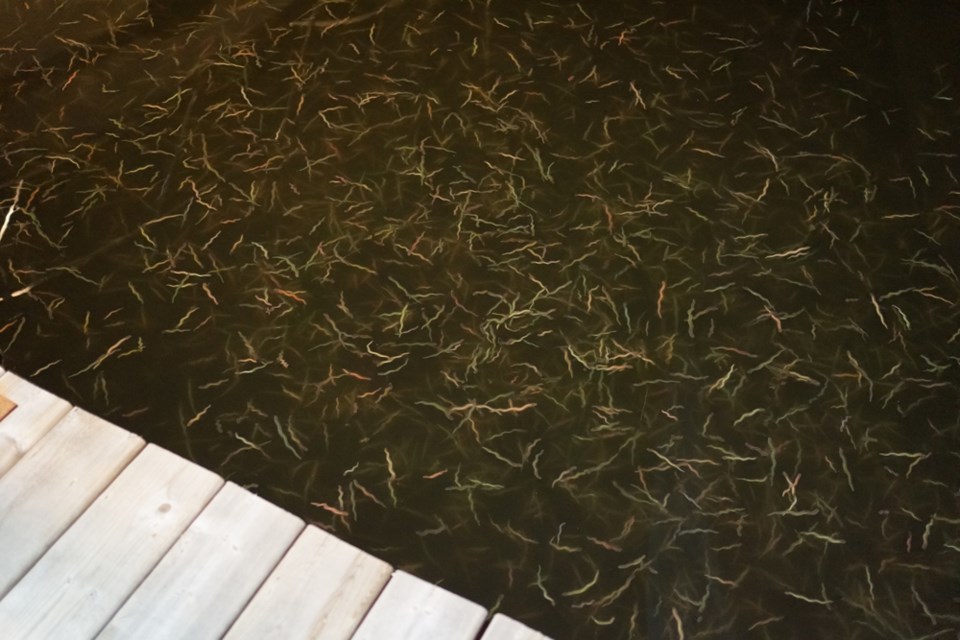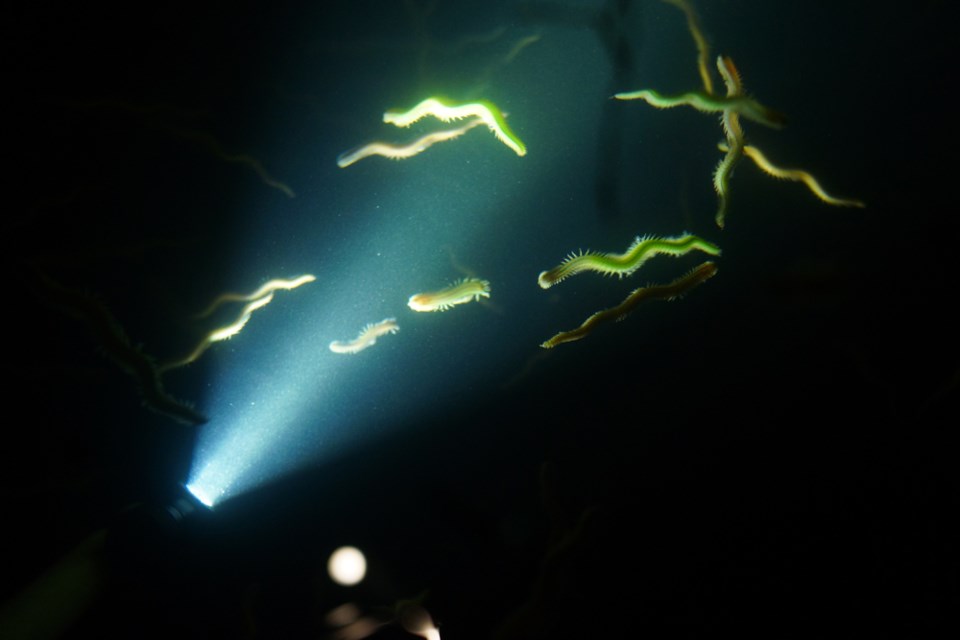They move toward beams of light like disembodied zombies toward a mass of human victims in a late-night B movie.
Marine worms — sea nymphs or sand worms as they are known — have been spotted recently around the docks in the Mamquam Blind Channel.
They are a common sight this time of year when they come to the surface of the water to breed, according to Danny Kent, Vancouver Aquarium’s curator of propagation.
Lunar cycles, along with a variety of other environmental cues can stimulate a synchronized breeding event when the worms leave the bottom, where they normally live, and swim en masse to the surface of the water, Kent added.
“Apparently lights on shore or docks can also influence this behaviour as at this time of year they become particularly sensitive to light and their eyes actually enlarge as they approach the breeding season.”
Closer to breeding season the worms also expand their fleshy appendages so they can swim better, and develop bristle paddles on the sides of their bodies.
They likely live one year and die after breeding.
To procreate, their bodies rupture and release sperms or eggs into the water.
“And those meet up and form a developing larvae that floats in the water column and gets dispersed by the tides and currents, and eventually that will form a little worm that sinks down to the bottom and lives for the rest of the year as a bottom-dwelling worm until the next spring,” Kent said.
Local worms eat plankton and are food primarily for bottom-dwelling fish. Mid-water fish might eat them as well when the worms come to the surface, Kent said. Other invertebrates may eat them if they can get ahold of them.
The worms seem to be a sturdy animal as they can be seen thriving in “nastier” bodies of water, Kent said.
“They are cool and it is kind of a neat opportunity if somebody sees them… as it is a small window [to view them],’ he added.
A helpful resource for learning about marine life seen locally, according to Kent, is Marine Life of the Pacific Northwest: A Photographic Encyclopedia of Invertebrates, Seaweeds and Selected Fishes by Andy Lamb and Bernard Hanby.




